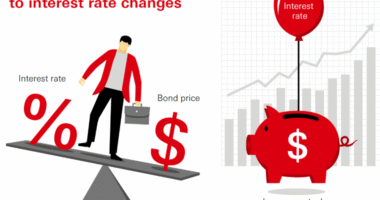When it comes to retirement investing, choosing where to put your money can make or break your long-term financial future. For most Americans, the biggest question is whether to focus on a 401(k) or a taxable investment account.
Both have unique advantages, tax implications, and flexibility levels — but understanding how each works is the key to making the right move for your goals.
What Is a 401(k)?
A 401(k) is an employer-sponsored retirement plan that lets you invest a portion of your paycheck before taxes are deducted. This reduces your taxable income and allows your investments to grow tax-deferred until retirement.
Employers often sweeten the deal with matching contributions, which is essentially free money added to your retirement account.
Pros of a 401(k)
-
💰 Tax-deferred growth: Pay no taxes on gains until you withdraw.
-
🏢 Employer match: Free money that instantly boosts your savings.
-
🔁 Automatic payroll contributions: Keeps you investing regularly.
-
💵 High contribution limits: Up to $23,000 in 2025 (or $30,500 if age 50+).
Cons of a 401(k)
-
⚠️ Limited investment options: Usually restricted to mutual funds.
-
⏳ Withdrawal penalties: 10% penalty if withdrawn before age 59½.
-
📉 Required Minimum Distributions (RMDs): Must withdraw after age 73.
What Is a Taxable Investment Account?
A taxable investment account (often called a brokerage account) is the most flexible way to invest. You can buy and sell stocks, ETFs, mutual funds, or bonds at any time, with no contribution or withdrawal restrictions.
Unlike retirement accounts, there are no tax advantages upfront, but you gain freedom and liquidity — perfect for investors who want access to their funds before retirement.
Pros of a Taxable Account
-
💡 No limits: Invest as much as you want, whenever you want.
-
🔓 No penalties: Withdraw anytime, for any reason.
-
📈 Full investment control: Access to all markets and assets.
-
💸 Favorable tax rates: Long-term gains taxed at 0–20%, not income rates.
Cons of a Taxable Account
-
💰 Annual taxes: Pay taxes on dividends and realized gains yearly.
-
🚫 No employer match: You fund it entirely yourself.
-
⚙️ Requires discipline: Must invest consistently without payroll deductions.
401(k) vs Taxable Account: Side-by-Side Comparison
| Feature | 401(k) | Taxable Investment Account |
|---|---|---|
| Tax Advantage | Pre-tax contributions, tax-deferred growth | Pay taxes on dividends & capital gains yearly |
| Contribution Limit (2025) | $23,000 (under 50), $30,500 (50+) | No limit |
| Withdrawal Rules | Penalty before 59½ | No penalties anytime |
| Investment Options | Limited to plan selection | Full market access |
| Employer Match | Often available | Not available |
| Liquidity | Low (for retirement only) | High (use anytime) |
| RMDs | Yes, after age 73 | None |
When to Choose a 401(k)
If your employer offers a match, a 401(k) is almost always the right first move. That match represents an instant 50%–100% return — something no other investment can guarantee.
It’s also ideal if:
-
You want to lower your taxable income today.
-
You plan to retire after 60.
-
You value automated savings and long-term growth.
💡 Example:
If you make $70,000 and contribute $10,000 to your 401(k), you’ll only be taxed on $60,000 this year. Plus, if your employer matches 50%, you gain an additional $5,000 toward retirement for free.
When to Choose a Taxable Investment Account
If you’re seeking flexibility, control, and liquidity, a taxable account is your best friend. It allows early retirement planning, passive income generation, or funding other goals (like buying a home) without penalties.
You can also use tax-loss harvesting to offset capital gains, minimizing your annual tax bill.
A taxable account is perfect if:
-
You’ve already maxed out your 401(k).
-
You want access to your money before retirement.
-
You want greater investment choice and freedom.
The Power of Combining Both
Why choose just one? The best investors know how to blend both strategies for maximum advantage.
-
Max your employer match in your 401(k).
-
Invest additional funds into your taxable account.
-
Diversify across both to gain tax flexibility later in life.
This dual approach ensures you benefit from tax-deferred growth and immediate liquidity, balancing both short-term and long-term wealth goals.
Tax Efficiency: The Key to Long-Term Success
Taxes play a huge role in how much wealth you keep.
-
401(k): You defer taxes until retirement, but withdrawals are taxed as ordinary income.
-
Taxable Account: You pay capital gains tax — usually lower — and can manage your gains strategically.
If you expect to be in a lower tax bracket in retirement, the 401(k) is advantageous.
If you want flexibility and tax control, the taxable account can outperform in the long run.
Retirement Planning Example
Imagine two investors:
-
Investor A: Contributes $10,000 per year to a 401(k) for 25 years.
-
Investor B: Invests the same amount annually in a taxable brokerage account.
If both earn 7% annually, their gross returns are similar — but after taxes, Investor B might retain more flexibility, while Investor A enjoys tax-deferred compounding.
In practice, the best plan combines both, ensuring you can retire comfortably without being overexposed to one tax strategy.
Final Thoughts: The Winner of the Showdown
There’s no one-size-fits-all answer.
If you’re employed with a company match, start with your 401(k) — it’s too valuable to ignore. Once you’ve reached your contribution goals, use a taxable investment account for extra flexibility and long-term wealth building.
In short:
-
🏦 401(k) = Tax savings + long-term growth
-
💼 Taxable Account = Freedom + control + liquidity
Together, they form the perfect retirement strategy — one that adapts to your financial goals, lifestyle, and the ever-changing tax landscape.
The earlier you start, the greater your advantage. Invest smart, diversify, and let compound growth work for your future.









